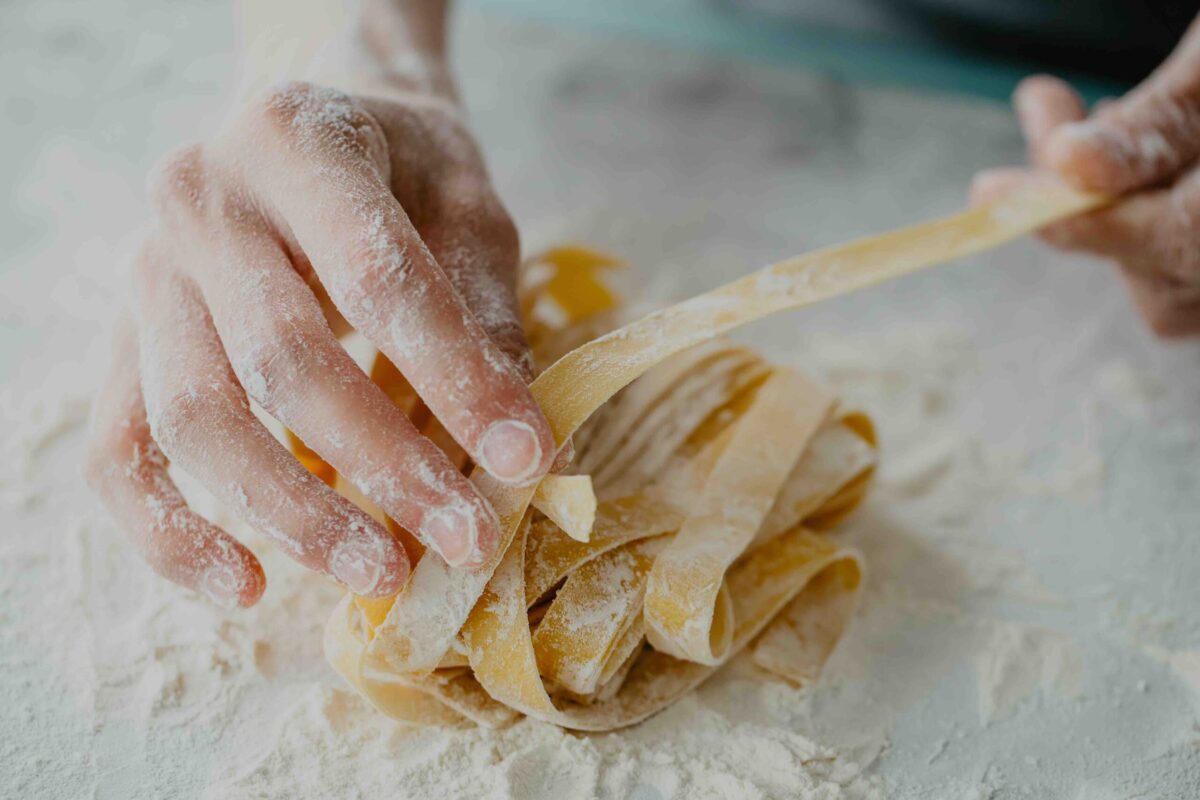Pasta, everyone loves it! But what is pasta made of and what are the ingredients of this popular food? Many people have no idea how pasta is made and that only a few ingredients are needed.So you don’t need much to produce a delicious pasta.
What is pasta made of?
Pasta is made from durum wheat and water. The majority of all types of pasta are made from these two ingredients. In some cases, egg is also added.
Of course, there are more types of pasta that contain some additional ingredients. Read on because we will explain to you exactly which pasta is made from what.
The history of pasta
Before we explain what pasta is made of, let’s take you through the history of pasta.
Pasta is one of the most popular foods in the world. In every country they know some form of pasta. When someone says pasta, people often automatically think of Italy.
It is impossible to imagine Italian cuisine without this food. It is also no surprise that Italians are the biggest pasta eaters in the world.
It is not only in Italy that they love pasta. According to various sources, pasta originated independently. So in different countries they ate types of pasta.
In China and other Asian countries, they did not know pasta, but noodles. This is made in a similar way and contains the same ingredients.
That pasta has been around for centuries is certain. The history of the Greeks and Romans shows that they were already eating pasta. The pasta was used in a different way than today. It was not boiled but roasted and baked in the oven. Which country was first, and where pasta really originated, remains a mystery.
The ingredients of pasta
The two ingredients you will always find in pasta are simple: water and durum wheat. Simple, right? Yet there is a lot more to it than it might seem.
An important detail we want to give you is the difference between soft and durum wheat. In high quality Italian pasta, you will notice that durum wheat is always used. This ensures that the pasta gets and keeps a firm structure.
In addition, the pasta sauce sticks better to the pasta. Always pay attention to this when you buy pasta. In our webshop you will only find pastas made of durum wheat.
A pasta dough is created by combining durum wheat and water. However, it often does not stop there. There are several other ingredients that are added to the dough. Often this is done for the color and flavor. We go through it with you.
Pasta made with egg
In many pasta forms, egg is added to the dough to make it even creamier and more flavorful. It also makes pasta more nutritious and rich in flavor. By adding egg, the pasta contains more proteins and vitamins. It is not common for all pasta forms to incorporate egg.
Ribbon pastas are known to often have egg in them. These are the classic Italian pastas tagliatelle, fettuccine and lasagna. These shapes are always flat and wide. These types of pasta are also available without the ingredient egg. In this case, it contains only water and hard durum wheat.
Flavored pasta
Nowadays there are all kinds of flavored pasta available. This is because, for example, vegetable juice has been added to the dough. We see this, for example, with spinach and tomatoes. The addition of vegetable juice has the effect of turning the pasta green or red.
These are sometimes combined together with “ordinary” unflavored pasta. This combination symbolizes the Italian flag and is called pasta tricolore.
Besides this example, there are more and more flavored pastas available. For example, you have pasta with funghi, red pepper, garlic, nettle and even ginger! The advantage to these pastas is that it is great to combine with certain sauces. By matching the flavors you can easily put a delicious dish on the table.
Production process of pasta
Now we know the ingredients of pasta. After these ingredients are combined, the next step is to form the pasta.
As we have mentioned, the ingredients are put together. These are kneaded together until a nice pasta dough is formed.
Bronze mold
Then the pasta dough goes through a bronze mold and the pasta shape is created. Now I hear you thinking: what is a bronze mold? A bronze mold not only determines the shape of the pasta, but also provides structure.
You can tell if the pasta has been made with a bronze mold because there is a ‘rough’ layer over the pasta.
Teflon mold
In cheaper pasta variants, a Teflon mold is used instead of a bronze mold. This results in a smooth and shiny surface. The glossy layer makes it harder for the sauce to stick to the pasta. The sauce slips off, as it were, making the dish less attractive.
Drying of the pasta
After the pasta shape has been created, the pasta only needs to dry. This is also a lot more complicated than it seems. For many products the rule is: mass is checkout. For this reason, they often want to make as much as possible in as short a time as possible.
The drying time can be reduced by increasing the temperature. This is a trade-off that many products make, so they dry pasta at the temperature of 80 degrees.
Drying pasta at this high temperature causes the proteins found in the wheat to “plasticize. This also creates a shiny layer, which prevents the pasta sauce from adhering as well. This pasta is also more difficult for many people to digest and simply less tasty.
Not all products choose to dry pasta in this way. They take their time with the pasta so that it retains its structure. As a result, the pasta is of good quality and the sauce adheres well to the pasta.
The products we work with choose to dry the pasta at a temperature of about 30 degrees. This makes the drying process take a lot longer, but the quality remains guaranteed.
We have briefly explained what the production process of pasta looks like. But there is much more to tell! Would you like to know more? You can read all about it in our blog: ‘How is pasta made?
Fresh pasta
In more and more supermarkets we see that fresh pasta is sold. You can also choose to make it yourself. But what is the difference between fresh and dried pasta?
With fresh pasta there is often egg in the pasta dough. This has the consequence that it does not keep as long as dried pasta. Another difference is that dried pasta is a lot firmer than fresh pasta.
We are fans of both versions of pasta! Still, in our opinion, it is a lot more practical to purchase dried pasta. You can keep it longer and just put it in the pantry. You can find the tastiest dried pasta in our webshop.
Types of pasta
With the ingredients needed to make pasta, you can make all kinds of pasta. In total, there are about 700 different types of pasta. Different shapes are ideal to combine with different pasta sauces.
In our webshop we have collected 150 different types of pasta. You will find special types of pasta which you will not find in the supermarkets, for example. In our blog we describe the different pasta types and what you can do with them. Read all about it and learn more about the most delicious food there is: pasta!

